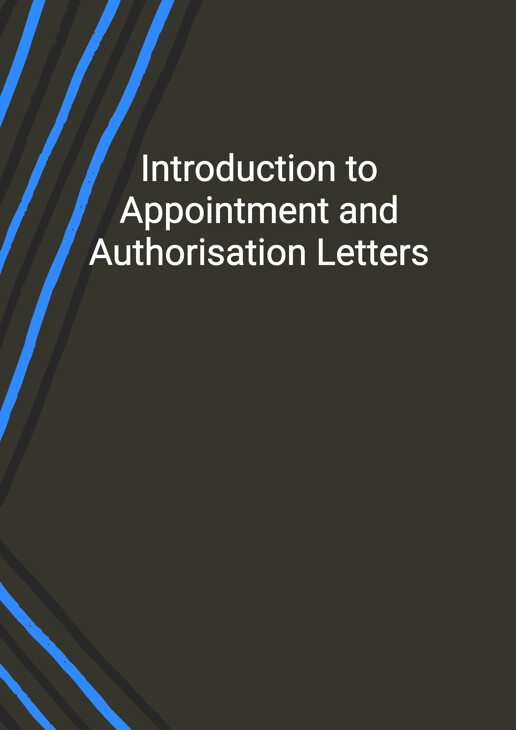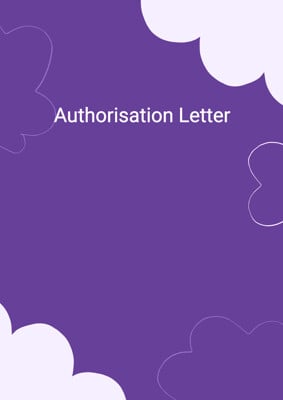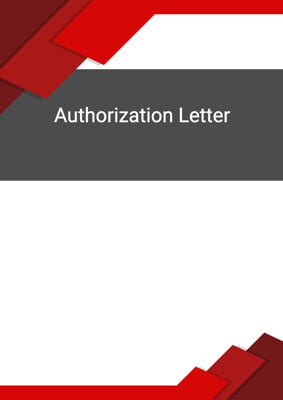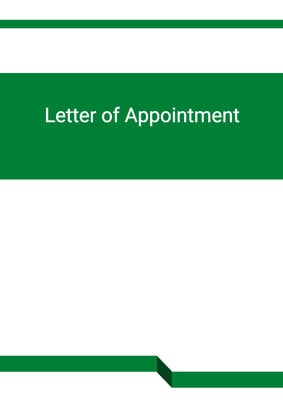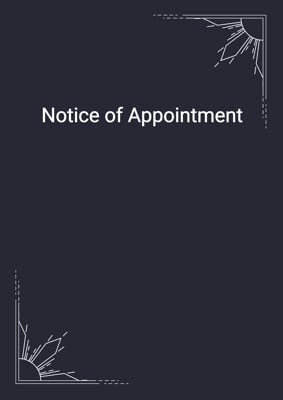How to Tailor the Document for Your Need?
01
Create Document
Click "Create Document" button and the document will be prepared with your account details automatically filled in.
02
Fill Information
Please fill in any additional information by following the step-by-step guide on the left hand side of the preview document and click the "Next" button.
03
Get Document
When you are done, click the "Get Document" button and you can download the document in Word or PDF format.
04
Review Document
Please review the document carefully and make any final modifications to ensure that the details are correct before publication / distribution.
Document Preview
Document Description
The document titled 'Introduction to Appointment and Authorisation Letters' provides a comprehensive overview of appointment and authorisation letters. It is important because these letters play a crucial role in various legal and business transactions. The document begins with a disclaimer stating that it is a general summary and not legal advice. It advises readers to consult their local lawyer as each jurisdiction may have different requirements.
The content of the document is organized in a table format, which serves as a quick reference guide for different types of appointment and authorisation letters. The table lists various documents and provides information on when to use each one.
The document covers different scenarios, including authorisation letters from individuals to third parties, authorisation letters from corporations to third parties, authorisation letters from individuals to authorised persons, authorisation letters from corporations to authorised persons, appointment letters from individuals appointors to third parties, appointment letters from corporate appointors to third parties, appointment letters from individuals appointors to appointees, appointment letters from corporate appointors to appointees, appointment letters from individual appointees to appointors, and appointment letters from corporate appointees to appointors.
For each type of letter, the document explains the purpose and perspective from which it is drafted. It provides a clear understanding of the terms of authorisation or appointment and the acts that will be carried out on behalf of individuals or companies.
Overall, this document serves as a valuable resource for individuals and corporations who need to understand the different types of appointment and authorisation letters and when to use them. It provides detailed information on each type of letter, ensuring that readers have a comprehensive understanding of their purpose and implications.
How to use this document?
1. Determine the type of letter needed: Identify whether an authorisation letter or an appointment letter is required based on the specific situation.
2. Understand the perspective: Consider whether the letter will be drafted from the perspective of an individual or a corporation. This will determine the language and format of the letter.
3. Specify the recipient: Clearly state the name and contact information of the third party or the authorised/appointed person.
4. Define the scope of authority: Clearly outline the specific rights, access, or responsibilities that the authorised/appointed person will have.
5. Include relevant terms and conditions: Specify any terms, conditions, or limitations associated with the authorisation/appointment.
6. Review and finalize the letter: Carefully review the letter for accuracy, clarity, and completeness. Make any necessary revisions before finalizing.
7. Obtain necessary signatures: Ensure that the letter is signed by the appropriate parties, such as the individual or corporate appointor and the third party or the authorised/appointed person.
8. Keep a copy for records: Make sure to keep a copy of the letter for future reference and documentation.
9. Communicate the letter: Send the letter to the intended recipient through a reliable and secure method, such as email or certified mail.
10. Follow up if necessary: If there are any questions or concerns regarding the letter, follow up with the recipient to address them promptly.
11. Seek legal advice if needed: If there are any legal complexities or uncertainties, consult with a local lawyer to ensure compliance with jurisdiction-specific requirements and regulations.
